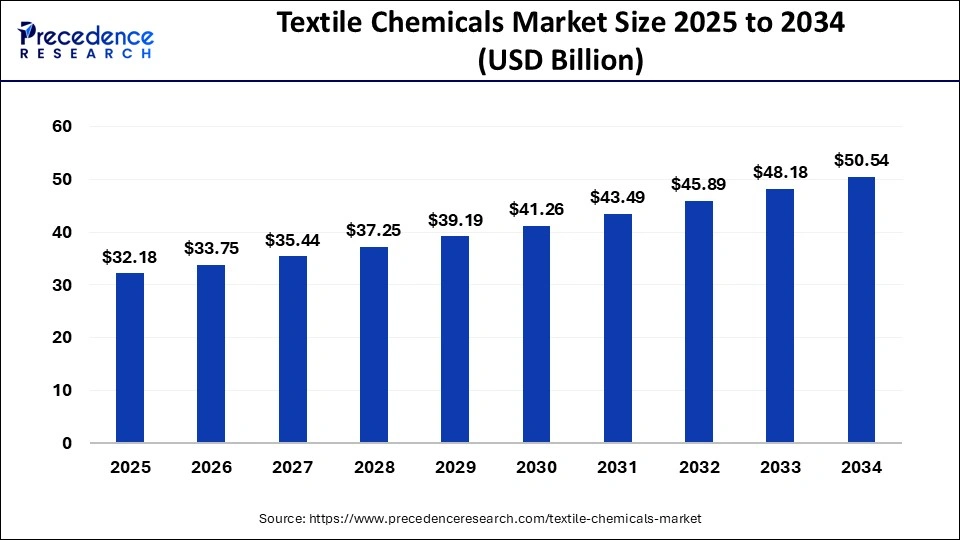Market Drivers
The textile chemicals market is primarily driven by the increasing demand for high-performance fabrics across various industries, especially the fashion and apparel sectors. As consumers seek textiles with enhanced properties, such as improved durability, water resistance, and UV protection, the need for specialty chemicals has risen. Additionally, the growth of the home textile industry, particularly in emerging markets, further boosts market demand. Technological advancements in textile processing and innovations in eco-friendly and sustainable chemicals also play a crucial role. With growing environmental concerns, there is a shift towards green chemicals and processes, encouraging manufacturers to adopt more sustainable practices. The expansion of textile production in the Asia Pacific region, driven by countries like China and India, is another key factor fueling the growth of the textile chemicals market. Furthermore, increasing awareness of fabric functionality, such as anti-microbial or anti-odor properties, drives the need for advanced textile treatments, thus fueling the demand for specialized chemicals.
Opportunities
- Growing demand for eco-friendly and sustainable textile chemicals.
- Increased consumer preference for high-performance fabrics with added functionalities (e.g., anti-microbial, water-repellent).
- Expansion of textile manufacturing in emerging markets, particularly in Asia Pacific.
- Rising adoption of innovative technologies in textile processing, such as nanotechnology and smart textiles.
- Potential for growth in technical textiles and industrial applications, beyond traditional apparel.
Challenges
- Environmental concerns related to the use of certain chemicals in textile production.
- Stringent regulations and compliance requirements regarding the use of chemicals in textiles.
- High raw material costs, which can affect the overall pricing of textile chemicals.
- The complexity of manufacturing eco-friendly textiles that meet performance standards.
Volatility in demand due to shifts in fashion trends or economic fluctuations.
Regional Insights
The textile chemicals market is witnessing strong growth in several regions, with Asia Pacific leading the global market. This region holds a dominant share due to the extensive textile manufacturing industry in countries like China, India, and Bangladesh. These nations are major hubs for textile production, driving the demand for textile chemicals. Additionally, the rising middle-class population and increasing disposable income in emerging markets contribute to the demand for higher-quality textiles, further boosting the market.
North America and Europe are also significant markets for textile chemicals, driven by their focus on innovation, technological advancements, and sustainability. The demand for eco-friendly and sustainable textile chemicals in these regions is particularly high, as both regions emphasize environmentally responsible practices. North America, in particular, has seen a growing interest in functional textiles such as activewear and protective clothing, creating additional demand for specialty chemicals.
Market Companies
- Evonik Industries AG
- Huntsman
- Solvay
- CHT Group
Recent Developments
Recent developments in the textile chemicals market have been characterized by a strong shift toward sustainability and innovation. Companies are increasingly prioritizing the production of eco-friendly chemicals to meet the rising demand for environmentally responsible practices. This includes innovations in biodegradable and non-toxic textile chemicals that help address the environmental concerns associated with traditional chemical usage. Additionally, the growth of digital printing technologies has spurred the development of new chemical formulations, enabling high-quality prints while reducing water and energy consumption. There has also been a noticeable increase in demand for specialty textile chemicals, particularly those that support digital textile printing. Moreover, functional textiles with enhanced properties such as moisture-wicking, anti-microbial, and UV-resistant capabilities have become more popular, further boosting the need for specialized chemicals in various sectors like healthcare, sportswear, and automotive applications. Companies are heavily investing in research and development to create sustainable alternatives to conventional textile chemicals, such as plant-based and water-based solutions, in an effort to minimize the environmental impact of textile production. Collaborative efforts between textile manufacturers, chemical companies, and regulatory bodies are reinforcing cleaner and more efficient production processes, which contribute to a more sustainable global textile value chain.

